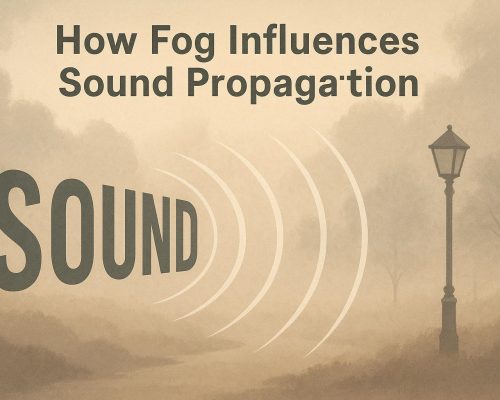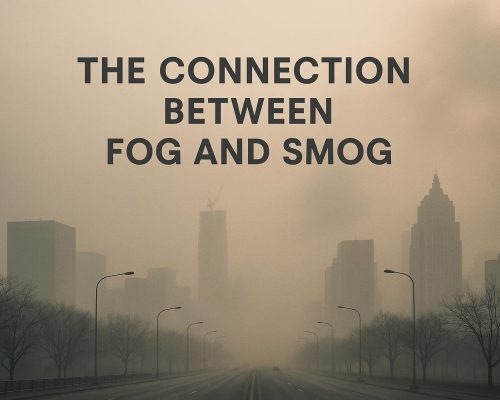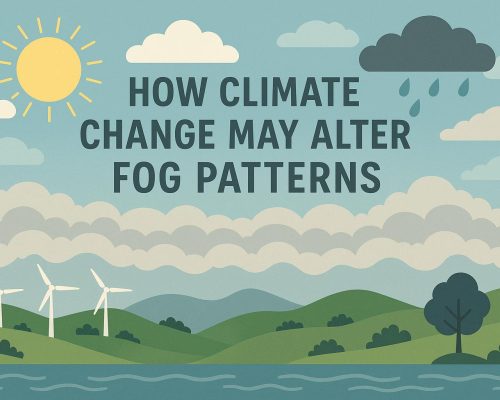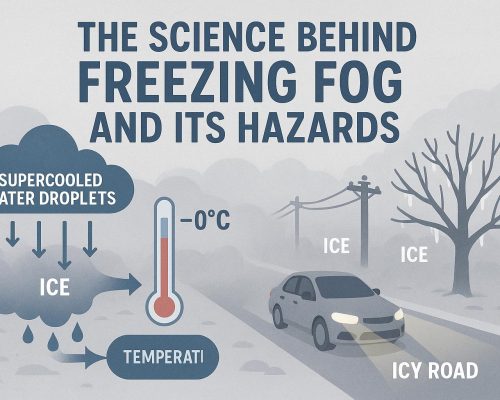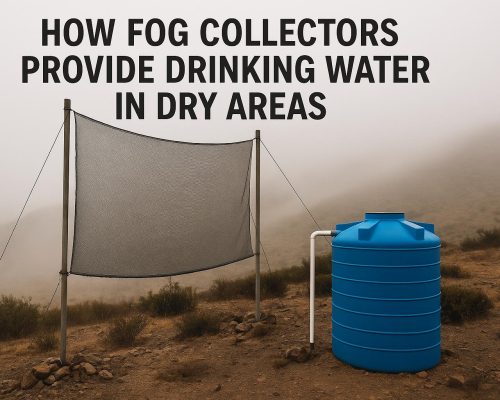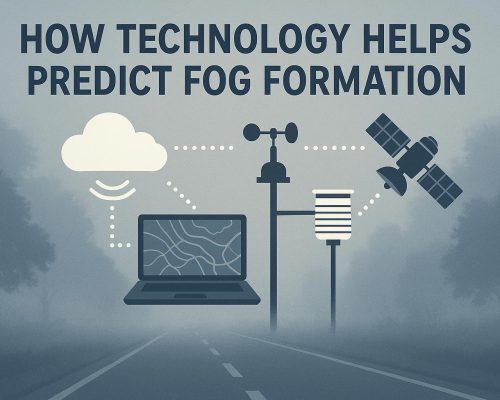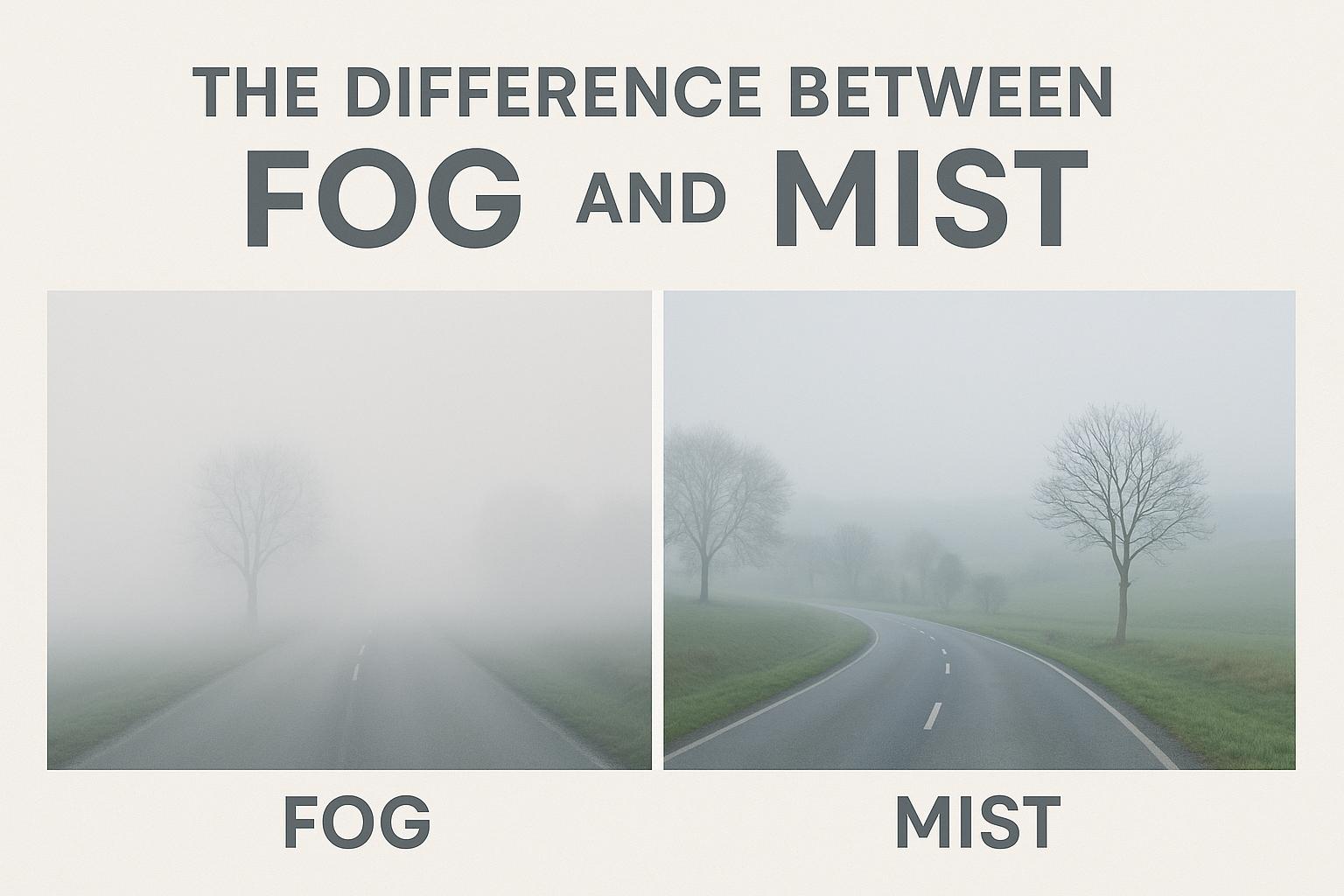
The Difference Between Fog and Mist
Understanding Fog and Mist
Fog and mist are atmospheric phenomena that often create beautiful yet mysterious scenes. While they may seem similar, key differences exist between the two. This text will explore these differences in detail, focusing on their characteristics, formation, and effects.
Defining Fog
Fog is essentially a dense cloud that forms at the ground level. It occurs when the air near the ground cools to its dew point, leading to the saturation of water vapor. When the air cannot hold any more moisture, water droplets form, creating fog. The main factor distinguishing fog from mist is its visibility. According to meteorological standards, fog reduces visibility to less than 1 kilometer (0.62 miles).
Formation of Fog
Fog typically forms in calm, stable weather conditions where there is little wind. This allows the air to cool enough for the water vapor to condense. Various types of fog exist, such as radiation fog, which forms after sunset in clear skies, and advection fog, which occurs when moist air moves over a colder surface.
Radiation fog is common in inland areas where the temperature drops rapidly after the sun sets. The absence of wind aids in the cooling process, allowing the fog to settle. On the other hand, advection fog is prevalent in coastal regions. Here, warm, moist air from the sea encounters the cooler temperatures of land, resulting in the formation of fog. Another type, known as evaporation fog, can occur when cold air passes over warmer water bodies, causing immediate condensation.
Topographical features also influence fog formation. Valley fog, for instance, forms in low-lying areas where cool air settles due to gravity, creating a blanket of fog. Mountain fog, or upslope fog, occurs when moist air flows up a mountain slope, cooling and forming fog as it ascends.
Effects of Fog
Due to its density and its ability to significantly reduce visibility, fog can pose dangers to transportation, affecting driving and aviation. Drivers often find it challenging to navigate through foggy conditions, as headlights can reflect off the moisture, creating glare and further reducing visibility. Airports may face delays or cancellations during heavy fog conditions, necessitating advanced navigation systems for pilots.
Fog also impacts the natural world. It can limit the amount of sunlight reaching plant life, affecting photosynthesis. In some ecosystems, however, fog can be a critical moisture source, especially in arid regions. The moisture from fog drips onto the soil, providing necessary hydration for plant and animal life. Certain species have even adapted to “harvest” fog moisture through specialized physical adaptations.
Defining Mist
Mist, like fog, is composed of tiny water droplets suspended in the air. However, the primary difference lies in its effect on visibility. Mist reduces visibility but not as much as fog does. Visibility in mist conditions is generally more than 1 kilometer but less than 2 kilometers (1.24 miles).
Formation of Mist
Mist forms in a similar way to fog, through the cooling of air to its dew point, but it occurs in slightly different conditions. Mist typically arises in areas with some light wind, which prevents the water droplets from becoming as densely packed as they are in fog.
This slight movement of air ensures that while condensation occurs, it does so less densely than in fog. Mist is often seen near bodies of water, early in the morning, or late in the evening. The presence of light wind disperses the moisture, leading to the formation of mist rather than fog.
Mist can also occur due to human activity. Urban mist can happen when warm emissions from factories or vehicles rise and mix with colder air, leading to mist formation. In natural settings, mist can create stunning landscapes, softening the view and creating what is often described as a “dream-like” scene.
Effects of Mist
While mist does not severely impact visibility as fog does, it can still create challenging conditions for activities such as driving or flying. The reduced visibility can cause drivers to slow down and take extra precautions. Although less dense than fog, mist still requires careful navigation to ensure safety.
In agriculture, mist can contribute to the dampness of the environment, which may support the growth of certain plant life. It can enhance the moisture in the air, benefiting crops sensitive to dry conditions. However, continuous mist can also lead to issues such as mildew and rot, affecting agricultural output.
Mist also influences artistic and cultural perceptions. Due to its ethereal quality, it frequently appears in literature, art, and photography. Artists and writers often use mist to convey mystery or transition, capturing the quiet moments when landscapes are veiled in a delicate shroud.
Conclusion
Understanding the differences between fog and mist is crucial, particularly for individuals involved in transportation or outdoor activities. Their formation processes may be quite similar, yet the impact on visibility is the defining characteristic that differentiates the two. While one diminishes visibility significantly, demanding utmost caution, the other creates subtle challenges that still require awareness. For further detailed insights related to atmospheric conditions and their impact on daily life, consider exploring specialized meteorological sources and studies.
In conclusion, while fog and mist share many similarities, they present distinct phenomena each with unique characteristics and implications. From influencing daily weather patterns to shaping natural and cultural environments, both fog and mist hold significant roles in our atmospheric landscape. By understanding their differences, we can better prepare and adapt to the conditions they create, ensuring safety and appreciation of their mesmerizing presence in our lives.

